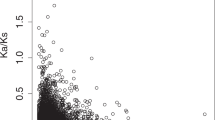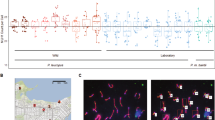Abstract
WE were interested that Mukherjee et al.1 have a further mule in which the donkey X chromosome (XP, XD of our report)2 is late replicating in 50 per cent of the cells. This is in agreement with the report by Mukherjee and Sinha3 and at variance with our findings2. We were extremely careful not to speculate on the significance of our observations2, and although we stressed that our findings suggested preferential activity of the paternal X we refrained from speculating about the origin of this phenomenon in “either inactivation or subsequent cell selection”. We agree that cell selection between inactivation and the time when we looked at the cells could account for our results. If this is so it is extremely interesting that in our three animals strong selective pressures seemed to favour activity of the XM(XD) as opposed to the XP(XH). We believe that our alternative hypothesis2 could equally account for our results. It is interesting that in the animal studied by Mukherjee et al.1 57.9 per cent of cells had a late replicating XP, while 42.1 per cent had a late replicating XM. Although this distribution is significantly different from ours and not significantly different from 50 per cent, it reveals a similar trend. It is a pity that they1 do not report results on glucose-6-phosphate dehydrogenase isoenzyme patterns for this animal.
This is a preview of subscription content, access via your institution
Access options
Subscribe to this journal
Receive 51 print issues and online access
$199.00 per year
only $3.90 per issue
Buy this article
- Purchase on Springer Link
- Instant access to full article PDF
Prices may be subject to local taxes which are calculated during checkout
Similar content being viewed by others
References
Mukherjee, B. B., Mukherjee, A. B., and Mukherjee, A. B., Nature, 228, 1321 (1970) (preceding communication).
Hamerton, J. L., Giannelli, F., Collins, F., Hallett, J., Fryer, A., McGuire, V. M., and Short, R. V., Nature, 222, 1277 (1969).
Mukherjee, B. B., and Sinha, A. K., Proc. US Nat. Acad. Sci., 51, 252 (1964).
Nyhan, W. L., Bakay, B., Connor, J. D., Marks, J. F., and Keele, D. K., Proc. US Nat. Acad. Sci., 65, 214 (1970).
Ohno, S., Wistar Inst. Symp. Monograph No. 9 (edit. by Defendi, V.), 137 (Wistar Institute Press, Philadelphia, 1969).
Author information
Authors and Affiliations
Rights and permissions
About this article
Cite this article
HAMERTON, J., GIANNELLI, F. Non-random Inactivation of the X Chromosome in the Female Mule. Nature 228, 1322–1323 (1970). https://doi.org/10.1038/2281322a0
Received:
Issue Date:
DOI: https://doi.org/10.1038/2281322a0
This article is cited by
Comments
By submitting a comment you agree to abide by our Terms and Community Guidelines. If you find something abusive or that does not comply with our terms or guidelines please flag it as inappropriate.



